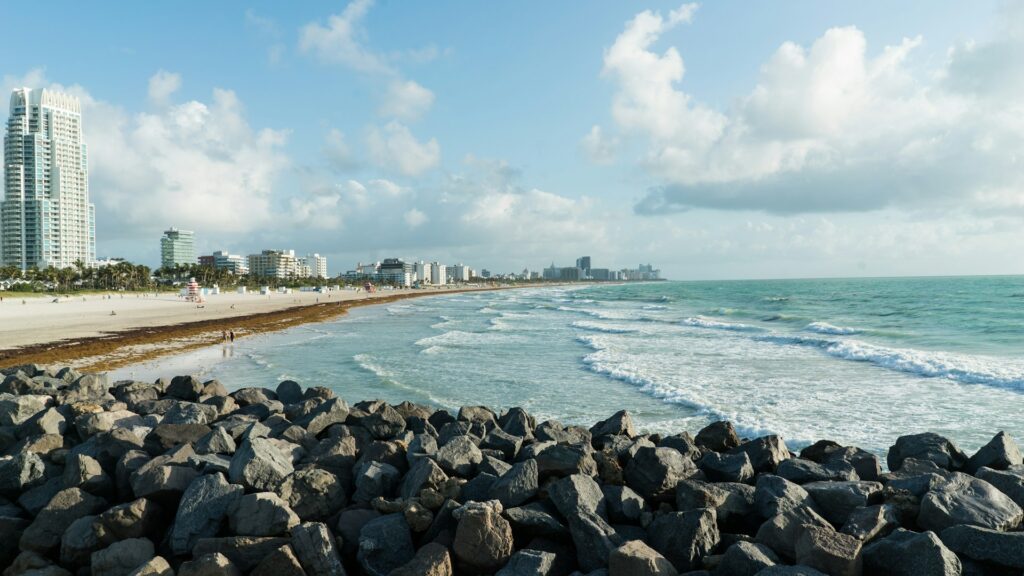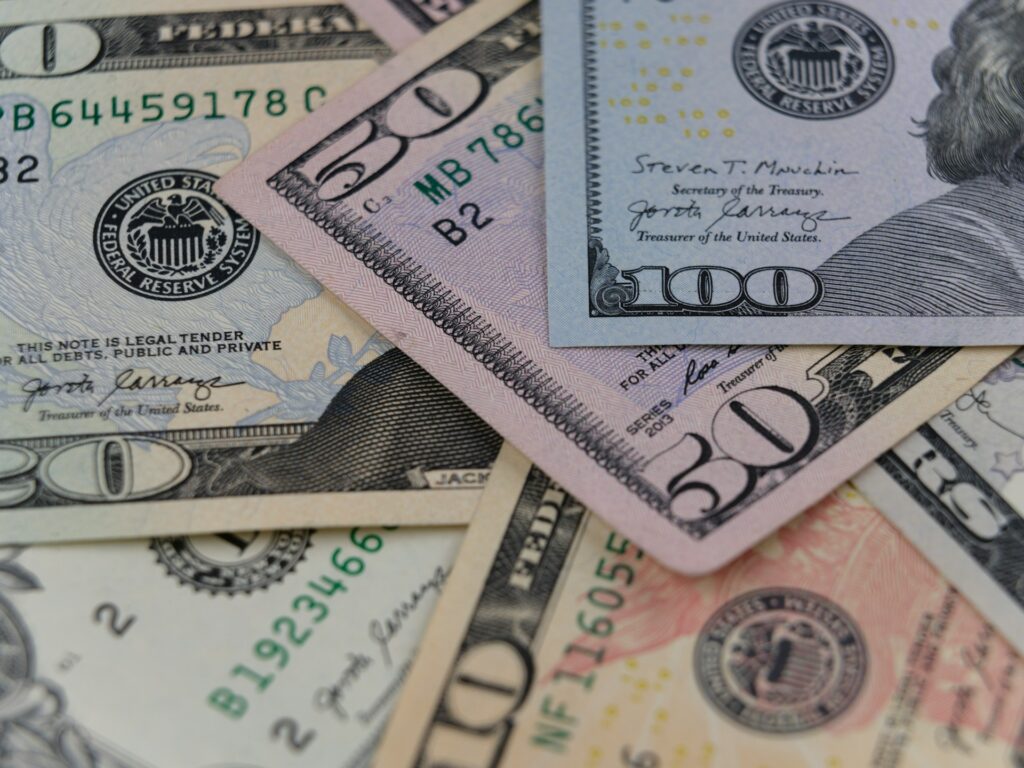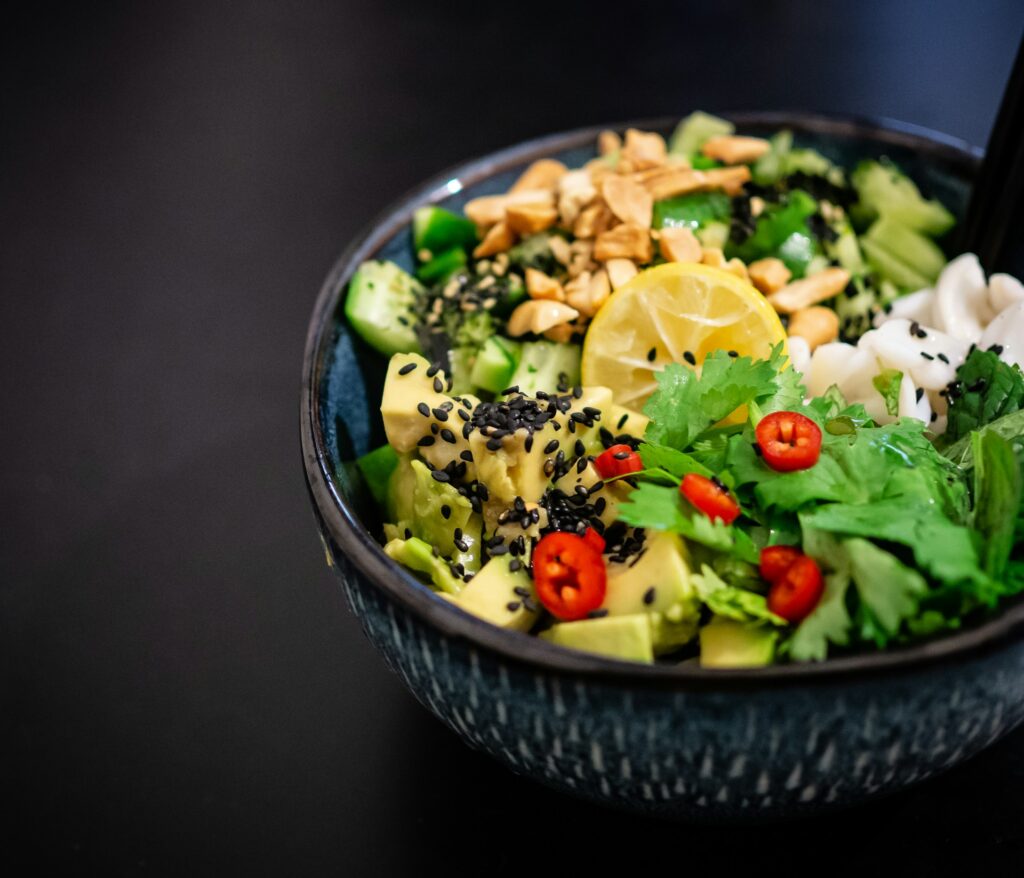Before Your Trip to USA
Before your trip to the United States, it’s important to prepare for a diverse and expansive country with a wide range of attractions. From iconic cities to breathtaking natural landscapes, the U.S. offers something for every traveler. Understanding key travel essentials like visa regulations, cultural norms, and weather conditions will help you make the most of your visit. This guide offers practical advice to help you navigate your American adventure smoothly and enjoyably.
The Weather in USA
The United States experiences a wide range of weather conditions due to its vast size and diverse geography. Here’s a general overview of the weather patterns in different regions,
Northeast
This region experiences four distinct seasons. Winters (December to February) can be very cold, especially in New England, with temperatures often dropping below freezing. Summers (June to August) are typically warm and humid, with temperatures ranging from the 70s to 90s °F (20s to 30s °C). Spring (March to May) and fall (September to November) are transitional seasons with mild temperatures and colorful foliage in the fall.
Midwest
Known for its harsh winters, the Midwest experiences cold, snowy conditions in winter, with temperatures often below freezing. Summers are hot and humid, with temperatures ranging from the 70s to 90s °F (20s to 30s °C). Tornadoes are common in spring and summer.
Southeast
This region has a warm climate year-round, with hot, humid summers and mild winters. Summer temperatures often exceed 90°F (32°C), while winter temperatures rarely drop below freezing. The Southeast is also prone to hurricanes from June to November.
Southwest
The Southwest is known for its arid and semi-arid climate. Summers are extremely hot, particularly in desert areas like Arizona and Nevada, with temperatures often exceeding 100°F (38°C). Winters are mild, with cooler temperatures in higher elevations. The region has two rainy seasons: winter and a brief monsoon season in late summer.
West Coast
The West Coast, including California, Oregon, and Washington, has a varied climate. Southern California has a Mediterranean climate with mild, wet winters and hot, dry summers. The Pacific Northwest is known for its mild temperatures year-round but experiences significant rainfall, especially in winter.
Mountain States and Alaska
These regions experience a range of weather due to their diverse geography. The Rocky Mountains and the Sierra Nevada have cold winters with significant snowfall, making them popular destinations for skiing. Alaska has a subarctic and polar climate, with long, harsh winters and short, cool summers. Coastal Alaska experiences milder temperatures with more precipitation.

How to Dress in the USA – Seasonal Considerations
The United States experiences a wide range of climates, so dressing appropriately depends on the region and season of your visit. Here’s a general guide:
Spring (March to May)
Spring in the USA can vary greatly. In the northern states and the Midwest, temperatures can still be cool, so layers are recommended, including a light jacket, long-sleeve shirts, and sweaters. In the southern states, spring tends to be milder, so lighter clothing such as t-shirts and jeans are usually sufficient. However, it’s advisable to bring a raincoat or umbrella, as spring showers are common.
Summer (June to August)

Summer is generally warm to hot across the country, but humidity levels vary. In the Southeast and Midwest, lightweight, breathable clothing is essential to cope with the heat and humidity. Shorts, t-shirts, and sundresses are common. In contrast, the Southwest experiences extreme heat, especially in desert areas, so loose, light-colored clothing, a wide-brimmed hat, and sunscreen are crucial for sun protection. Coastal areas and the Pacific Northwest have milder summers, but layers may still be necessary for cooler mornings and evenings.
Fall (September to November)
Fall brings cooler temperatures, particularly in the northern and central regions. Layered clothing is ideal, with options like sweaters, long-sleeve shirts, and a medium-weight jacket. The Northeast is famous for its colorful foliage, and the weather can be quite pleasant, making it a great time for outdoor activities. In the southern states, temperatures remain relatively warm, so lighter clothing can still be worn, but with a light jacket for cooler evenings.
Winter (December to February)
Winter weather varies widely across the USA. Northern states and the Midwest can experience severe cold and snow, requiring heavy winter coats, hats, gloves, and boots. In contrast, the southern states, including Florida and southern California, have mild winters where a light jacket or sweater suffices. The Mountain States and Alaska have extremely cold winters, so visitors should prepare for frigid conditions with thermal wear and insulated outer layers.
No matter the season or location, it’s advisable to check local weather forecasts before your trip to ensure you’re adequately prepared for the conditions you’ll encounter.
The Currency in USA

The official currency in the United States is the U.S. Dollar (USD), symbolized as “$” and often referred to simply as “the dollar.” It is divided into 100 cents, with coins commonly available in denominations of 1, 5, 10, and 25 cents, and bills in $1, $5, $10, $20, $50, and $100 denominations. The U.S. dollar is widely accepted across the country for all transactions, from everyday purchases to large expenditures. Major credit cards such as Visa, MasterCard, and American Express are also widely accepted, making it convenient for both residents and visitors to carry out transactions.
For international travelers, it is advisable to have some U.S. dollars on hand for initial expenses such as transportation, tips, or small purchases, as not all establishments, especially in rural areas, may accept credit cards
Which Currency Can Tourists Use in USA?
Tourists in the United States primarily use the U.S. Dollar (USD) for transactions. While credit and debit cards are widely accepted, cash is still useful, especially for small purchases, tips, and in areas where electronic payments may not be accepted. Most major currencies are not directly accepted for payments in the U.S., so it is advisable for tourists to exchange their money for USD either before traveling or upon arrival. Currency exchange services are available at airports, major banks, and hotels, though using ATMs can often provide better exchange rates. Some businesses may accept traveler’s checks, but this is becoming less common, so having cash and a reliable card is recommended.
Where to Exchange Money in USA?
In the United States, tourists can exchange money at various convenient locations. Airports are a popular choice for currency exchange, offering services through exchange booths and kiosks, though these often come with higher fees and less favorable rates. Major banks also provide currency exchange services, typically offering better rates than airports. Hotels, especially those in tourist-heavy areas, may offer currency exchange, but often at a premium. For better rates, travelers can use ATMs, which are widely available and provide access to cash in U.S. dollars, though it’s important to check with your bank regarding fees for international transactions. Additionally, some cities have standalone currency exchange offices, particularly in areas frequented by international visitors.
Tips for Exchanging Money in USA
When exchanging money in the USA, there are several tips to ensure you get the best value and avoid unnecessary fees. First, compare rates between different providers, such as banks, currency exchange services, and airports, as rates can vary significantly. Using ATMs for withdrawals often provides better exchange rates, but be mindful of international transaction fees from both the local ATM and your home bank. It’s also advisable to carry a mix of cash and cards, as some places may not accept credit or debit cards, especially in rural areas or small businesses. If using a credit card, opt for one that doesn’t charge foreign transaction fees. Additionally, avoid exchanging large amounts of money at airports, where rates are typically less favorable. Always notify your bank of your travel plans to avoid any issues with card usage, and keep receipts of transactions for your records.
The Language in USA
The primary language spoken in the United States is English, which is used in government, education, and media, making it the de facto national language. However, the U.S. is a linguistically diverse country due to its large immigrant population. Spanish is the second most commonly spoken language, widely used in states with large Hispanic communities such as California, Texas, and Florida. Other languages, including Chinese, Tagalog, Vietnamese, French, and Korean, are also spoken in various communities across the country. While most Americans speak English, you may encounter areas where other languages are prevalent, particularly in multicultural cities and neighborhoods. In general, English proficiency is high, and tourists will find that most people can communicate in English, especially in tourist areas.
The Necessary Documents and Emergency Contacts
Visa and Passport for USA
Travelers to the United States must have a valid passport and, depending on their nationality, may also need a visa. The U.S. Visa Waiver Program (VWP) allows citizens of certain countries to travel to the U.S. for tourism or business purposes for stays of up to 90 days without a visa, provided they have an approved ESTA (Electronic System for Travel Authorization). For those not eligible for the VWP, a visa is required and should be obtained prior to travel. This could be a tourist visa (B-2) for leisure, medical treatment, or social visits, or a business visa (B-1) for attending meetings or conferences. It’s important to check specific requirements and apply well in advance, as visa processing times can vary. Upon arrival in the U.S., travelers will go through immigration and customs, where they must present their passport, visa (if applicable), and completed customs declaration form. Always ensure your passport is valid for at least six months beyond your planned departure date from the U.S.
Travel Insurance
You must have travel insurance with a minimum medical, evacuation and repatriation coverage of US$50,000 covering all applicable dates of travel with the Tour Operator. This insurance must cover personal injury and emergency medical expenses. On the first day of each Tour, a representative of the Tour Operator will verify that you have sufficient insurance in place. You are strongly recommended to extend your coverage to include cancellation, curtailment, and all other expenses that may arise as a result of loss, damage, injury, delay or inconvenience while traveling. You acknowledge that insurance coverage is not included in the cost of any Tour offered by the Tour Operator, and you are required to obtain separate coverage at an additional cost. It is your responsibility to ensure that you have sufficient coverage and comply with the terms of the applicable insurance plans. You are responsible for advising your insurer of the type of travel, destination(s) and activities included in your booking so that the insurer may provide appropriate coverage.
Travel Vaccines for USA
While the United States generally does not require vaccinations for entry, it is recommended for travelers to be up-to-date on routine vaccinations. These include measles-mumps-rubella (MMR), diphtheria-tetanus-pertussis (DTaP), varicella (chickenpox), polio, and the annual flu shot. Depending on specific travel plans and individual health considerations, additional vaccines may be advised, such as hepatitis A and B, especially for travelers who may be exposed to contaminated food or water, or who plan to have close contact with the local population. Rabies vaccination is also considered for those engaging in outdoor activities or visiting rural areas where contact with animals might occur. It’s advisable to consult with a healthcare provider or a travel medicine specialist several weeks before travel to ensure all recommended vaccinations are administered in time. Additionally, travelers should consider health insurance coverage that includes the United States, as healthcare can be expensive.
Essential Emergency Numbers in USA
In the United States, the primary emergency number is **911**, which connects you to emergency services including police, fire, and medical assistance. Here are some key emergency numbers:
- Police, Fire, Ambulance: 911
- Poison Control Center: 1–800–222–1222
- Non-Emergency Police: Varies by locality, typically found in local directories
- Roadside Assistance: Varies by service provider (g., AAA: 1-800-222-4357)
- S. Department of State (for international travelers): 1-888-407-4747
Vegetarian, Vegan and Gluten-free Eating in USA

The United States offers a wide range of options for vegetarian, vegan, and gluten-free dining, reflecting its diverse culinary landscape. In most major cities, you’ll find restaurants dedicated to these dietary preferences, with menus clearly marking vegetarian, vegan, and gluten-free dishes. Many mainstream restaurants also cater to these diets, offering plant-based or gluten-free options. Popular chains, such as Whole Foods Market and Trader Joe’s, provide extensive selections of specialty products, making it convenient for those with dietary restrictions to find suitable groceries.
For those following a vegetarian or vegan diet, the U.S. has seen a significant increase in plant-based alternatives, including meat substitutes and dairy-free products, available in grocery stores and restaurants alike. Gluten-free options are also widely available, often labeled on menus and packaging to assist those with celiac disease or gluten sensitivity. Additionally, numerous apps and online resources can help locate restaurants and stores offering suitable options, ensuring that dietary needs are easily met while traveling in the U.S.
Do’s and Don’ts in USA
Do’s in USA
- Do tip service staff, typically 15-20% for good service in restaurants, and a few dollars for hotel staff and taxi drivers.
- Do respect personal space; Americans generally prefer an arm’s length distance during conversations.
- Do follow traffic rules strictly, including seat belt laws and pedestrian crossings.
- Do use “please,” “thank you,” and “excuse me” in daily interactions; politeness is highly valued.
- Do carry identification, as it may be required for age verification in various situations, such as purchasing alcohol or entering clubs.
Don’ts in USA
- Don’t smoke in public places where it is prohibited, such as restaurants, bars, and public transportation; there are designated smoking areas.
- Don’t engage in discussions about sensitive topics like politics, religion, or personal finances unless you are familiar with the people you’re conversing with.
- Don’t assume everyone speaks English fluently; be patient with non-native speakers and use simple language if necessary.
- Don’t litter; the U.S. has strict littering laws, and fines may apply.
- Don’t be late for appointments or meetings; punctuality is considered a sign of respect.
What to Pack for USA?
Travel Adapter for USA
When traveling to the United States, you’ll need to use a travel adapter for your electronic devices. The standard voltage in the U.S. is 120V with a frequency of 60Hz, and the power outlets typically have two flat prongs or three-pronged outlets with two flat pins and a grounding pin. Most travelers from Europe, Asia, and other parts of the world will require a plug adapter to fit their devices into American outlets. Additionally, it’s important to check whether your electronics are dual voltage; if not, a voltage converter may be necessary to prevent damage to your devices. Compact travel adapters and converters are widely available and can be purchased online or at major electronics stores.
Wifi Access and Mobile Connectivity in USA
WiFi access and mobile connectivity are generally reliable and widely available throughout the United States. Most hotels, cafes, restaurants, and public spaces offer free or paid WiFi, making it easy for travelers to stay connected. In urban areas and tourist destinations, high-speed internet is commonplace, while rural areas may have slower speeds or less coverage. Public libraries and some transportation hubs also provide free internet access. For mobile connectivity, the U.S. has extensive 4G and increasingly 5G networks, compatible with most international smartphones. Travelers can use international roaming services from their home carriers or purchase a local SIM card for more affordable data plans and local calling rates. Prepaid SIM cards and mobile hotspots are available at airports, electronics stores, and online, providing flexible options for staying connected.
In Your Suitcase
- Clothing: Pack according to the season and region you’re visiting. Include versatile outfits for layering, a formal outfit for special occasions, and comfortable walking shoes. Don’t forget swimwear if you’re heading to a beach or hotel pool.
- Medications and First Aid: Bring essential medications and a basic first aid kit. Include any prescription medications in their original packaging.
- Toiletries: Include personal hygiene items, though many are available for purchase locally. Consider bringing a travel-size laundry detergent for hand-washing clothes.
- Travel Adapter: A travel adapter is necessary for charging devices. Check if a voltage converter is needed.
- Probiotics and Supplements: Pack any daily supplements, including probiotics, to maintain your health while traveling.
- Outerwear: Depending on the season, pack a jacket, raincoat, or other outerwear.
- Optional Items: Hat, sunscreen, and sunglasses (optional depending on the season).
In Your Daypack
- Documents: Keep your passport, travel insurance, itinerary, and any necessary visas or tickets handy.
- Electronics: Carry a camera, smartphone, portable charger, and any necessary cables.
- Snacks and Water: Bring snacks and a refillable water bottle to stay hydrated and energized during your outings.
- Map and Guidebook: A physical map and guidebook can be handy, especially in areas with limited internet access.
- Personal Care Items: Include hand sanitizer, tissues, and any other personal care items you might need throughout the day.










